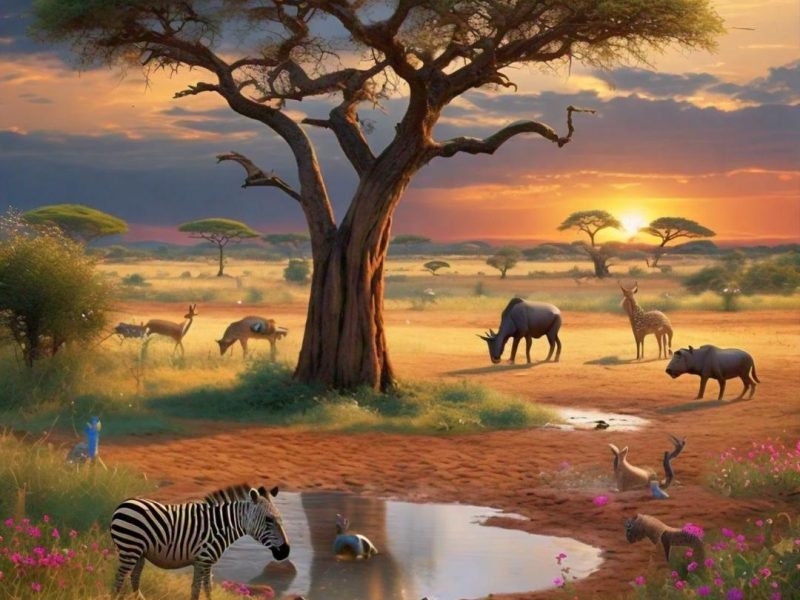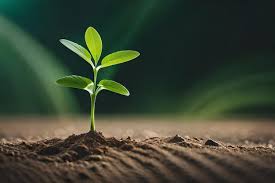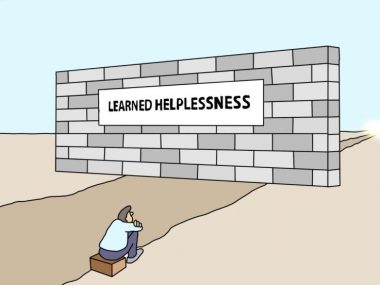Let’s take a tour into drawing some parallels with happening in the wild, in relation to the Nigerian printing business community which can be likened to the animal kingdom of the wild—quite diverse, competitive, and constantly adapting to survive. Just like in the wild, there are dominant players, like the “lions” of the industry, who control large portions of the market. These big firms, with their advanced machinery and extra vast networks, often set the tone, much like apex predators in the savannah.
On the other hand, there are the smaller printers, the “gazelles” of the industry, agile and quick to adapt. They may usually not have the size, but they survive by focusing on niche markets, offering personalized services, or rapidly innovating to stay ahead of the larger competitors. Meanwhile, the unlucky ones get waylaid and lost their “steeze” to the hunters of the wild who need to satisfy their ever-growing appetite in their various colonies.
In the wild, cooperation is sometimes necessary for survival—like birds that clean the teeth of crocodiles. In the printing world, businesses partner, forming alliances through trade associations, or sharing resources to weather economic storms and fierce competition. Even the lions form a colony of prides keep together to become formidable enough to send a strong signal to others, a kind of “This is a military zone, keep off” message.
Just as some animals adapt to drought by migrating, many Nigerian printers who are facing economic challenges, rising costs, and technological shifts, are also forced to reinvent themselves, adopt new technologies like digital printing, or diversify their offerings or even totally abandon the trade for greener pastures abroad which we now call “japa” – to run away. The industry, like the wild, is all about resilience, adaptation, and the fight for survival. Only those who evolve thrive in this ever-changing ecosystem.
When there is a drought in the wild, nature teaches us several lessons that can be applied to resolving economic problems:
- Resource Conservation: During drought, animals and plants adapt by using resources sparingly. For instance, to conserve water, camels will adapt to minimize sweating. They can let their body temperature rise higher than most mammals before needing to sweat to cool down, significantly reducing water loss. Their thick fur also insulates them from the heat, helping to prevent overheating during the day while conserving body moisture. Similarly, in times of economic downturn, individuals and businesses should focus on conserving financial resources, cutting unnecessary expenses, and maximizing efficiency to survive the lean period.
- Diversification: In the wild, species that rely on multiple food sources or adapt their habits are more likely to survive. A great example of diversification by animals in the wild is the red fox (Vulpes vulpes). Red foxes are highly adaptable and can be found in a variety of habitats ranging from forests and grasslands to urban areas. Their success in diverse environments comes from their ability to diversify their diet and behavior based on available resources. Economically, diversification of income streams, investments, or industries can help a country or business withstand crises and reduce over-dependence on any one sector or in our case printing process.
- Innovation and Adaptation: Drought forces plants and animals to evolve new ways to survive. An easy-to-identify example of innovation and adaptation is seen in chimpanzees. These intelligent primates demonstrate various adaptive behaviours, particularly in their use of tools and problem-solving skills. Chimpanzees will use sticks and twigs to “fish” for termites and ants inside mounds or tree trunks. They carefully select and modify the sticks to the right length and shape, innovating based on the specific challenge of accessing their food source. This behavior shows their ability to manipulate tools for specific tasks. Also, in some chimpanzee communities, they use stones or pieces of wood to crack open hard-shelled nuts. This requires not only the selection of the right tools but also learning the technique to strike the nut just hard enough to open it without smashing the contents. Chimpanzees have also been observed to make “leaf sponges” by folding or chewing leaves into a ball and using them to soak up water from tree cavities. This innovation allows them to drink from sources that are otherwise inaccessible. Different groups of chimpanzees have different tool-use traditions, showing how they adapt to their environments and teach these innovations to younger members of their group. For instance, some communities use sticks to extract honey, while others do not, depending on the availability of resources in their habitat. In the economy, tough times often lead to innovation. Crises can push companies and governments to rethink strategies, adopt new technologies, and explore creative solutions to meet changing demands.
- Community and Collaboration: In the wild, animals may form new alliances or migrate together for survival. In an economy, collaboration between governments, businesses, and communities should be driving collective solutions, from public-private partnerships to sharing resources and knowledge, up to even pulling resources together for beneficial joint ventures.
- Planning for the Future: Droughts are often cyclical, and smart species adapt by preparing in advance, storing food or conserving water. A well-known example of planning for the future in the wild is the behaviour of squirrels by storing food when they prepare for winter. Squirrels collect nuts, seeds, and other food items during the warmer months and bury them in multiple locations (a behavior called “caching”) to ensure they have enough food when resources become scarce in winter. This forward-thinking behavior ensures their survival during harsh conditions when food is no longer readily available. Instead of putting all their food in one place, squirrels scatter their caches in different locations. This reduces the risk of losing everything if a predator or another animal finds one of their stashes. It’s like diversifying investments, ensuring that even if one cache is raided, they still have reserves elsewhere. Squirrels have a remarkable memory and use spatial awareness to relocate their stored food when needed. They even adapt their caching behaviour by hiding more food in years when they sense a harsher winter coming, showing their ability to plan based on environmental cues. Older wiser squirrels choose the best nuts to store, often discarding those that are damaged or less nutritious. This careful selection ensures that their food supply is of high quality when they retrieve it later. This example of planning for the future by squirrels teaches the importance of preparation, diversification, and resource management. In business and economics, it highlights the need to save and invest during good times to prepare for difficult periods, ensuring long-term sustainability even when resources become scarce. Economically, countries and businesses need to plan for downturns by building reserves, investing in infrastructure, and creating safety nets to cushion future challenges, and indeed the printing ecosystem is not immune against this.
- Sustainability: Droughts highlight the importance of managing resources sustainably. Economically, long-term planning and a focus on sustainable growth—balancing short-term gains with long-term stability—are essential for preventing future crises. A compelling example of sustainability during drought can be observed in the African Elephants (Loxodonta africana) and their adaptation strategies. African elephants are known for their ability to locate water sources over long distances. During droughts, they use their keen sense of smell and memory to find water holes that may be miles away. They play a crucial role in sustaining the ecosystem by digging new waterholes with their tusks, which can provide water for other animals. When food is scarce, elephants adapt by eating a broader range of vegetation. They consume bark, leaves, and branches from a variety of tree species, which allows them to survive even when their preferred food sources are depleted. To manage heat and conserve water, elephants engage in behaviours such as bathing in mud and dust. Mud helps cool their bodies and protects their skin from the sun, while dusting helps to keep parasites at bay and further reduces water loss through evaporation. African elephants are known for their migratory behavior, moving over large distances in search of food and water. This nomadic lifestyle allows them to exploit resources in different areas and ensures they can survive during periods of drought by accessing different parts of their habitat. The good news is that in today’s world a nomadic print practitioner doesn’t really need to change their location. From print-on-demand to custom buys, their e-commerce shines through screens and skies, Connections forged in cyberspace, their artistry finds its global place. Through SEO and social streams, they paint with pixels, craft with schemes, in every chat and email’s grace, they keep the print art in its place. So, here’s to the nomad’s digital quest, in virtual realms where they’re at their best, their creativity knows no bounds, In the online world, their printing art resounds. Making some forex by some sustainable act of being a digital print nomad won’t be a bad idea…
By observing how nature copes with drought, we can draw valuable insights on resilience, adaptability, and the need for sustainable and innovative solutions to economic problems in our printing communities.
The ancient Greek philosopher, Plato discussing how human needs drive innovation and creativity concluded by saying “Necessity is the mother of invention”, in closing I want to plead that we see the current economic situation as a spring board to re-enacting our creative juices, let it so flow that it will provoke new ideas, innovative solutions and collaborations to help us through this difficult period and to even come out stronger after it.




